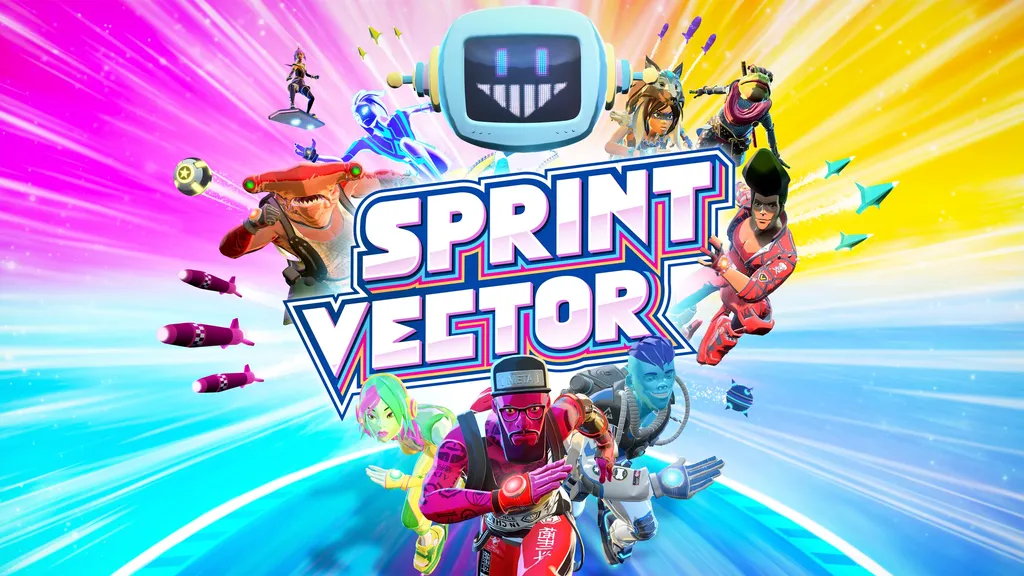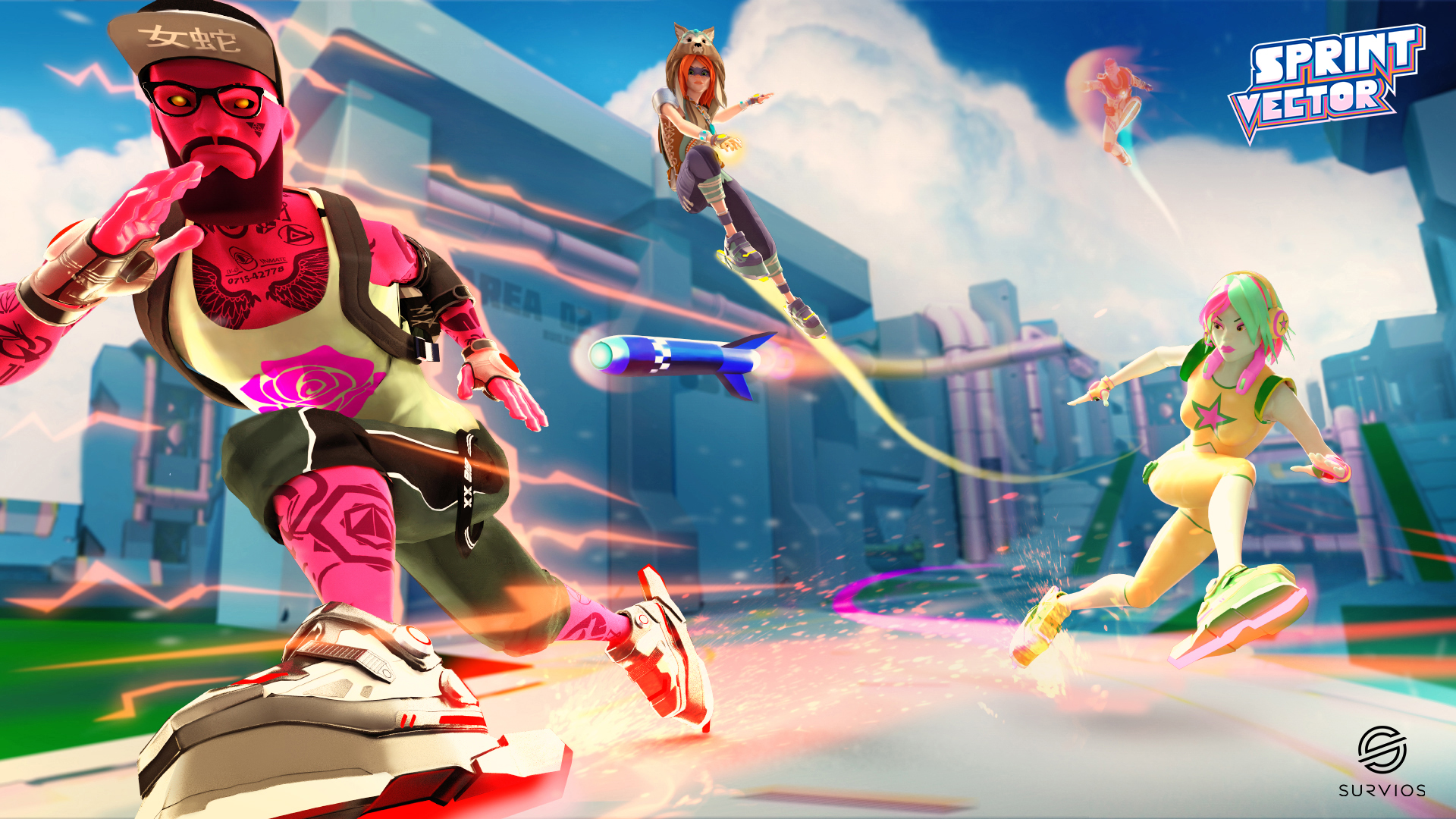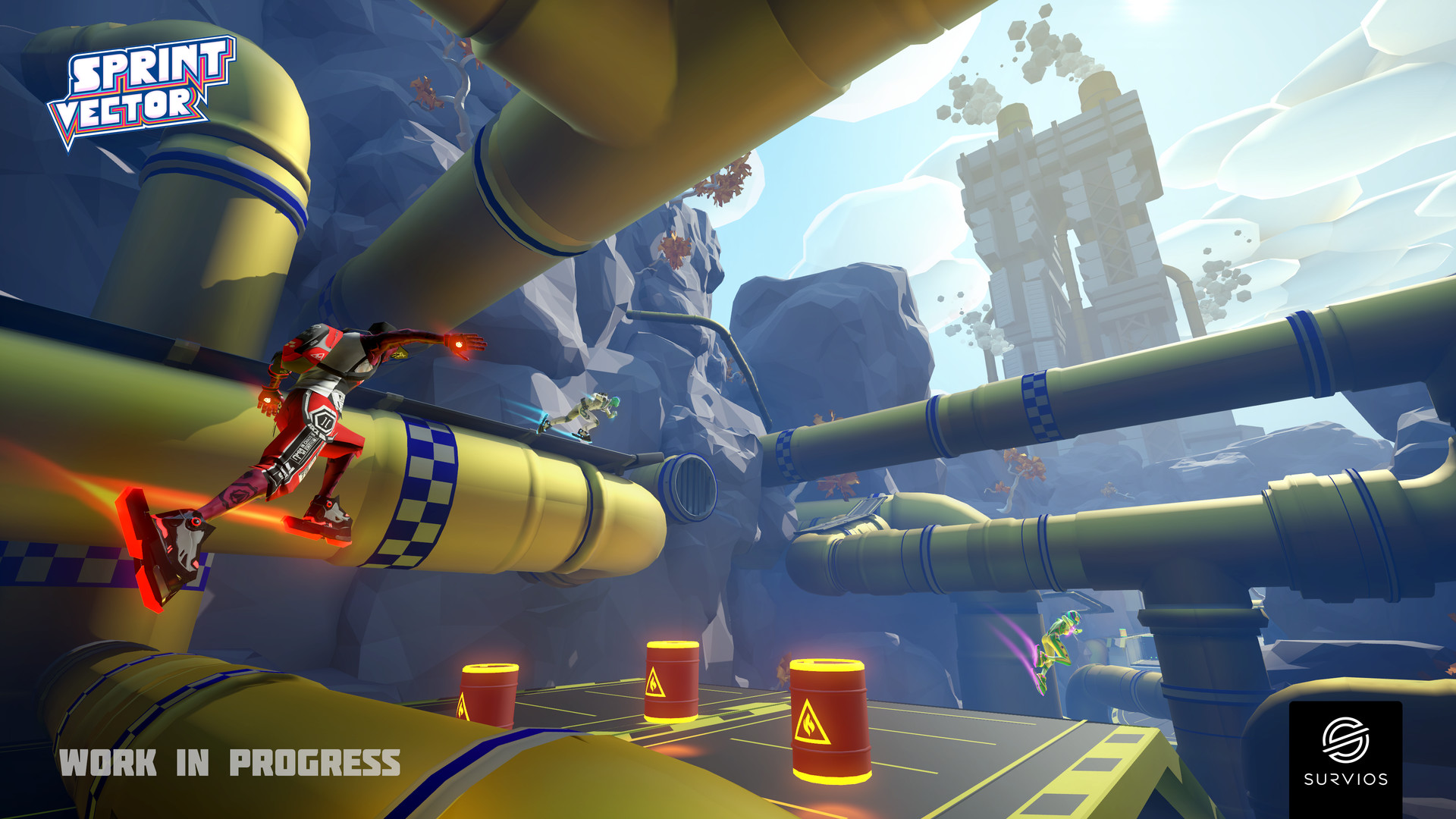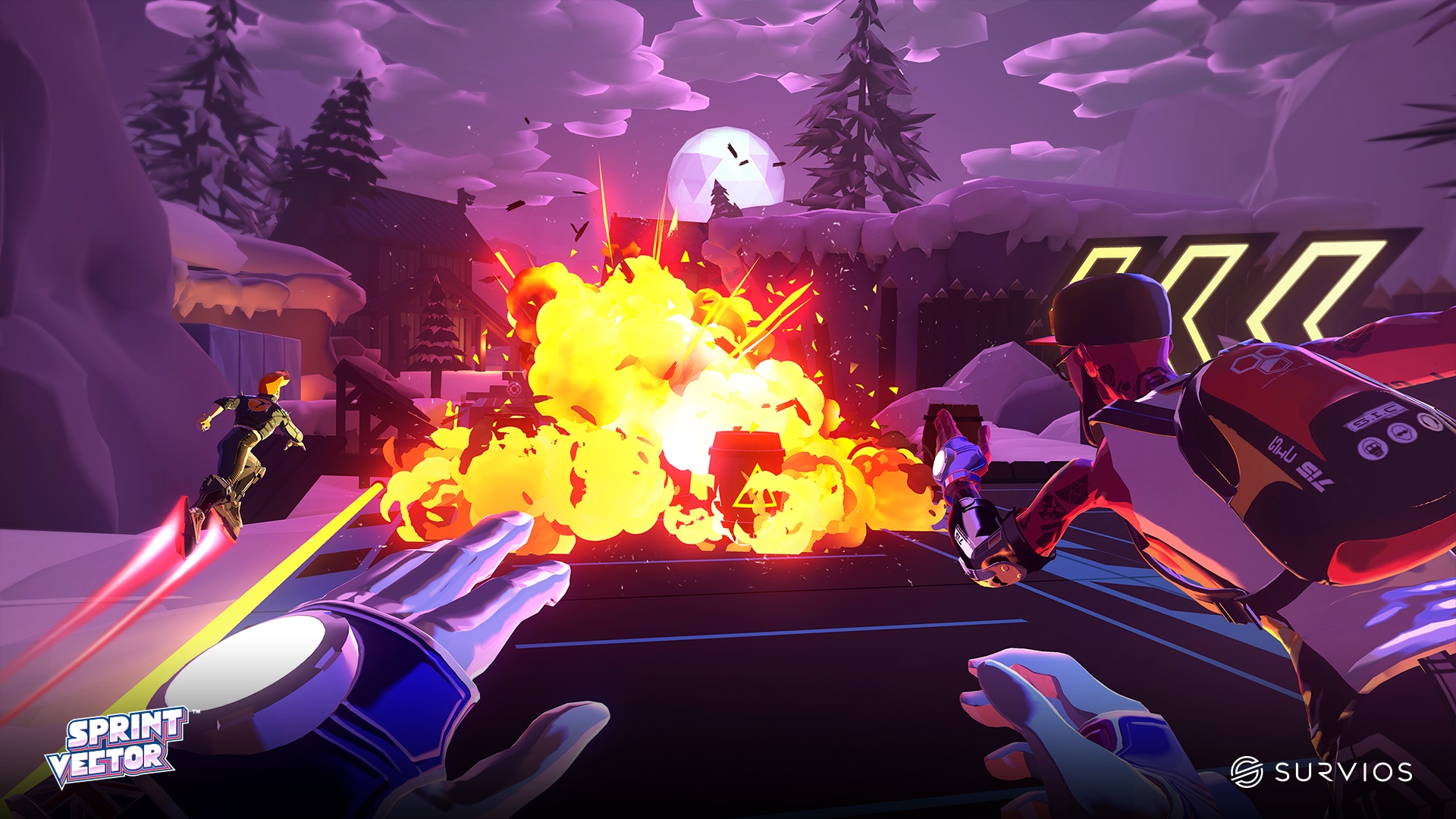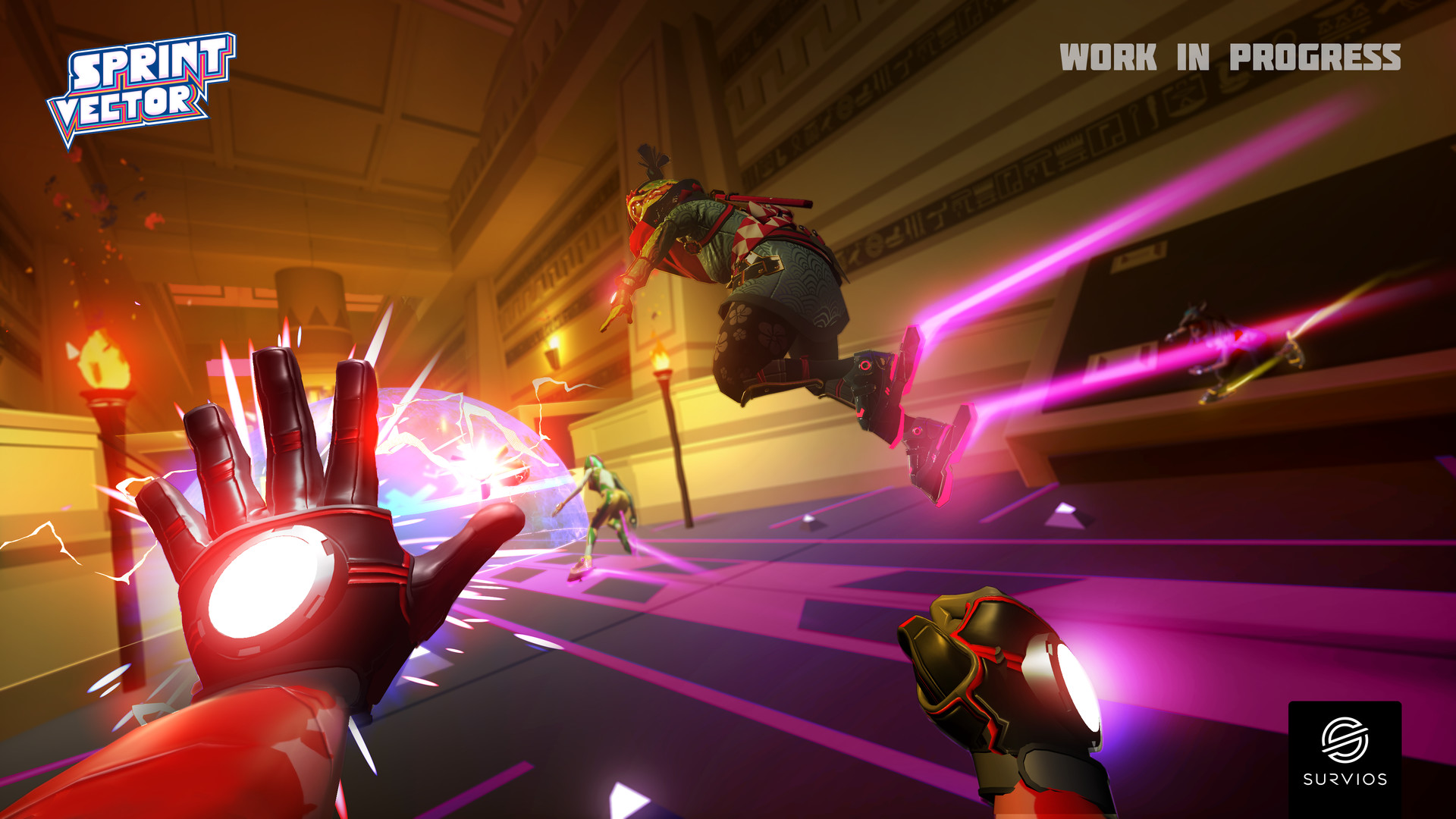Editor’s Note: This review has been republished and partially updated for Sprint Vector’s launch on PSVR.
Original: Sprint Vector is absolutely ridiculous. It’s ridiculous in the sense that you look crazy while playing — swinging your arms like a lunatic, working up a sweat while standing in place — but also it’s ridiculous in its very premise, that you could boost through elaborate levels at upwards of 30 and 40 miles per hour.
But above all else, Sprint Vector is just ridiculously fun. Whether you’re racing against the game’s surprisingly challenging AI opponents or online against other racers from around the world, it’s the type of game that’s easy to pick up and play in short bursts but also endlessly rewarding to master.
Perhaps the most surprising and impressive thing about Sprint Vector is just how well the movement system works. It’s a fast-paced racing game that has you standing on your feet as you swing each arm at your sides, grabbing and then releasing the triggers as if you’re boosting along the ground like Iron Man on roller blades. It works great most of the time, but every now and then it seemed like I was having trouble going in the direction I wanted even though I seemed to be inputting my commands properly.
Occasionally you can jump into the air and glide across levels or down deep chasms, or even climb up walls and grind along rails, to spice things up a bit. And just in like Mario Kart, you can drift around corners and pick up power-ups that litter every level.
Many of the power-ups can make or break your chances at victory in the final stretch of a race with the power to do things like give you a giant boost of speed or even explode in a large area of effect dome, disrupting your opponents and forcing them to stop. They’ere difficult to use though as you’ll have to reach out with an arm to aim your shot while still trying to swing your arm and move at the same time.
The learning curve is definitely quite steep at first because understanding how the various mechanics work in tandem between one another definitely takes a bit of work. You should always be as focused on speed as you possibly can, churning your arms in quick, rapid movements to build up your velocity, and hitting boosts and ramps along the way. Once you’ve got the rhythm of movement down and start using power-ups to take out enemies it feels really, really satisfying.
One of the most understated portions of the game though, the obstacle course-esque Challenge maps, could have easily been expanded upon to offer a lot more content. There weren’t enough of them (nine total, but you’ll burn through them in an hour or two) and I found myself addicted to trying to get better times on each.
At its core though, Sprint Vector is all about blistering speed and pulse-pounding races. Playing against other real people on any of the 12 maps enhances the experience ten-fold as hearing the frustrating in their voice as you zip past across the finish line at the last second never gets old.
I can say with supreme confidence that there is no other game like Sprint Vector out there on the market right now and I don’t think there will be for quite some time.
Sprint Vector is a great example of a game that could not exist without VR. The act of swinging your arms from side-to-side as you boost along massive, sprawling levels in contention with other racers is exhilarating. It makes for one of the silliest looking games to watch someone play but one of the most intense (and exhausting) experiences you can have in a headset.
Sprint Vector is available starting today on Oculus Home and Steam. The PSVR version launches on 2/13/18. Read our Game Review Guidelines for more information on how we arrived at this score.

